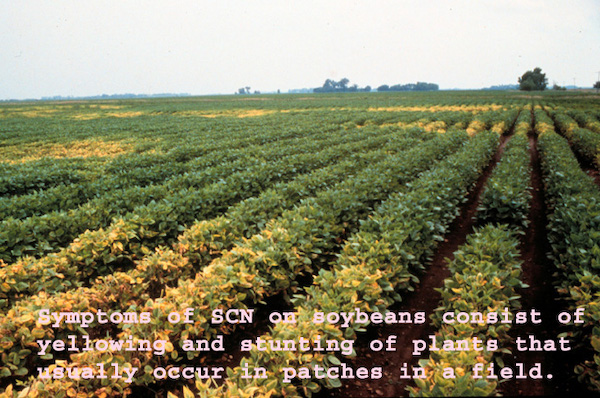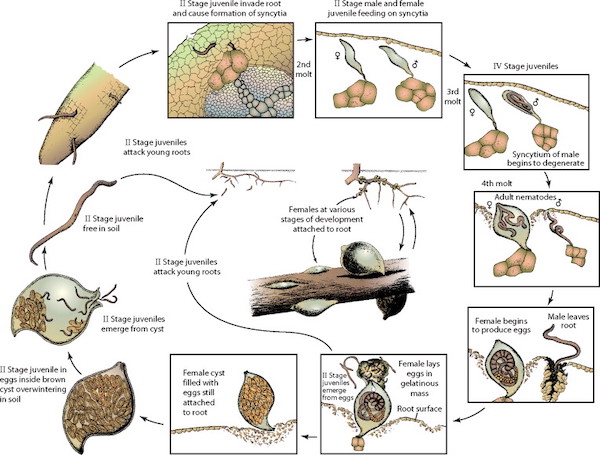Soybean Cyst Nematode (SCN) is the most devastating and yield-limiting pest of soybeans in the U.S. According to The SCN Coalition, the devastating pest is present in most areas where soybeans are grown and continue to rapidly spread each year with an estimated annual yield loss potential of $1.5 billion. The SCN Coalition’s has developed a new tool, the SCN Profit Checker, to help farmers estimate how much the pest is costing in their own fields. The tool’s release coincides with the third consecutive SCN Action Month during October to raise awareness of the dangers SCN pose.
SCN Action Month is a joint initiative between BASF Agricultural Solutions and The SCN Coalition. Last year during SCN Action Month, SCN was present in 77% of soil samples BASF received, up +4% from the previous year, and damaging levels of nematodes were found in half of the submitted samples received.
“Many growers aren’t aware of SCN or don’t believe it’s damaging their fields, and identifying it can be difficult as the cysts are about 10% the size of a soybean nodule,” said Nick Tinsley, BASF Technical Field Representative, Seed Treatments. “Testing your soil during the fall is key to this educational effort. When growers learn their SCN numbers, they can use that information to make a strong preventive management plan for the following year based on real data from their own field.”
BASF and The SCN Coalition encourage growers to get out in their fields during October and test for nematodes to help manage their soybean fields against SCN in the future. That’s because SCN populations build through the growing season, which makes after-harvest the ideal time to test soil for SCN, according to University of Nebraska Plant Pathologist Dylan Mangel.
The SCN Coalition says the first step in actively managing SCN is knowing what you have in your fields. Once detected, the nematodes will always be there to some degree, but you cannot effectively manage a persistent pest like SCN if you’re unaware that it’s present. “Once you receive your soil test result, use the Coalition’s new SCN Profit Checker tool to get a yield- and profit-loss estimate,” says Mangel. “This tool puts in dollars and cents what SCN is costing farmers on a per-field basis.”
The SCN Profit Checker calculator, developed by the SCN Coalition, is based on over 25,000 university research plots. Based on that research, Iowa State University’s Greg Tylka says researchers determined there are four factors that have a direct relationship to yield loss. The calculator they developed asks farmers to provide only those four factors: egg counts, the SCN female index, a field’s sand content percentage, and the field’s soil pH. Learn more about SCN Profit Checker HERE.
The SCN Coalition is a public/checkoff/private partnership formed to increase the number of farmers who are actively managing SCN. The group’s goal is to increase soybean farmers’ profit potential and realize higher yields. Partners in The SCN Coalition include university scientists from 28 states and Ontario, grower checkoff organizations, including the North Central Soybean Research Program, United Soybean Board and several state soybean promotion boards, and corporate partners including BASF, Bayer, Growmark, Nufarm, Pioneer (Corteva), Syngenta, UPL Ltd., Valent and Winfield United. Learn more HERE.









